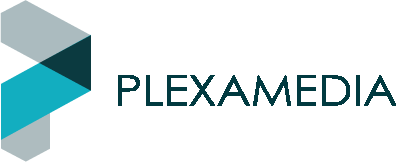In the world of search engine optimization (SEO), internal linking plays a vital role in improving website structure, user experience, and search engine rankings. When implemented strategically, internal links can guide users through your website, distribute link equity, and signal the importance of specific pages to search engines. In this article, we will explore the importance of internal linking, and its benefits, and provide you with effective strategies to optimize your internal linking for SEO.
Establish a Logical Site Structure: Before diving into internal linking strategies, it’s crucial to establish a logical site structure. Organize your website into relevant categories and subcategories, ensuring that each page has a specific purpose and target keyword(s). A well-structured website allows for easier navigation and effective internal linking
 Use Descriptive Anchor Text: Anchor text refers to the clickable text used for internal links. It’s important to use descriptive and relevant anchor text that provides context and signals to users and search engines what the linked page is about. Avoid generic phrases like “click here” and instead use keyword-rich anchor text that accurately describes the linked content.
Use Descriptive Anchor Text: Anchor text refers to the clickable text used for internal links. It’s important to use descriptive and relevant anchor text that provides context and signals to users and search engines what the linked page is about. Avoid generic phrases like “click here” and instead use keyword-rich anchor text that accurately describes the linked content.
Prioritize Contextual Links: Contextual links embedded within the content carry more weight than links placed in navigational menus or footers. Such links provide additional information and context to readers, enhancing their experience while also signaling to search engines the importance of the linked page. Look for opportunities to naturally incorporate relevant internal links within your content.
Optimize Your Homepage: Your homepage is a crucial hub for internal linking. Ensure that it provides easy access to key pages on your website through well-organized navigation menus, sidebar links, or featured content sections. By linking to important pages from your homepage, you can pass link equity and signal their significance to search engines.
Create Topic Clusters: Topic clusters are a content organization strategy that involves creating pillar content (comprehensive and authoritative pages) and supporting cluster content (more specific subtopics related to the pillar content). Internal linking between pillar and cluster content helps establish topical relevance and strengthens your website’s authority on a specific subject. Link from cluster pages to the pillar page and vice versa to distribute link equity and encourage deeper exploration of related content.
Implement Breadcrumb Navigation: Breadcrumb navigation provides users with a clear path to navigate back to higher-level categories or the homepage. It also helps search engines understand the hierarchical structure of your website. By implementing breadcrumb navigation, you create additional internal linking opportunities that improve user experience and website structure.
Update and Audit Internal Links: Regularly review and audit your internal links to ensure they are accurate, functional, and still relevant. Remove or fix broken links, update outdated anchor text, and optimize internal links based on any changes in your website’s structure or content. This ongoing maintenance ensures that your internal linking strategy remains effective and contributes positively to your SEO efforts.
Monitor Internal Linking with Analytics: Utilize website analytics tools to monitor the performance of your internal links. Track the click-through rates and engagement metrics of internal links to determine their effectiveness. This data can help you identify opportunities to optimize your internal linking strategy further and improve user engagement on your website.
Avoid Excessive Internal Links: While internal linking is important, it’s crucial to avoid excessive linking within your content. Overwhelming users with too many internal links can lead to a poor user experience and dilute the link equity flowing through your website. Focus on providing relevant and valuable internal links that enhance the content rather than overwhelming it.
 In conclusion, internal linking is a fundamental aspect of SEO that improves website structure, user experience, and search engine rankings. By implementing effective internal linking strategies, such as establishing a logical site structure, using descriptive anchor text, prioritizing contextual links, creating topic clusters, optimizing the homepage, implementing breadcrumb navigation, updating and auditing internal links, monitoring performance with analytics, and avoiding excessive linking, you can enhance your website’s SEO.
In conclusion, internal linking is a fundamental aspect of SEO that improves website structure, user experience, and search engine rankings. By implementing effective internal linking strategies, such as establishing a logical site structure, using descriptive anchor text, prioritizing contextual links, creating topic clusters, optimizing the homepage, implementing breadcrumb navigation, updating and auditing internal links, monitoring performance with analytics, and avoiding excessive linking, you can enhance your website’s SEO.
Internal linking not only helps users navigate your website and discover related content but also assists search engines in understanding the hierarchy and relevance of your pages. By strategically linking to important pages from your homepage, incorporating contextual links within your content, and creating topic clusters, you can distribute link equity and strengthen your website’s authority on specific topics.
Regularly auditing and updating your internal links ensures that they remain accurate and functional. Additionally, monitoring the performance of your internal links through analytics helps you identify areas for improvement and optimize your strategy accordingly.
While internal linking is essential, it’s important to strike a balance. Avoid overwhelming users with excessive links that can hinder their experience. Instead, focus on providing relevant and valuable internal links that enhance the content and guide users to additional resources.
By implementing these internal linking strategies, you can improve your website’s structure, user experience, and SEO. A well-optimized internal linking strategy not only helps users discover relevant content but also signals to search engines the importance and interconnectedness of your pages. Take the time to plan and optimize your internal links, and you’ll see the positive impact on your website’s visibility and search engine rankings.






